5 Anatomical Insights Every Fitness Trainer Needs to Design Safer Workouts
Aug 31, 2025
Fitness training is both a science and an art. While enthusiasm motivates clients, a deep understanding of human anatomy ensures their safety, performance, and long-term progress. At the Institute of Human Anatomy (IOHA), we offer evidence-based education through our online courses and resources to help trainers elevate their practice. To further support your learning, we also recommend consulting respected resources like the American College of Sports Medicine (ACSM), the National Strength and Conditioning Association (NSCA), and peer-reviewed research from the Journal of Orthopaedic & Sports Physical Therapy (JOSPT).
In this guide, we’ll explore five essential anatomical principles to optimize workouts, reduce injury risks, and deliver better client results.
1. Joint Mechanics: The Foundation of Safe Movement
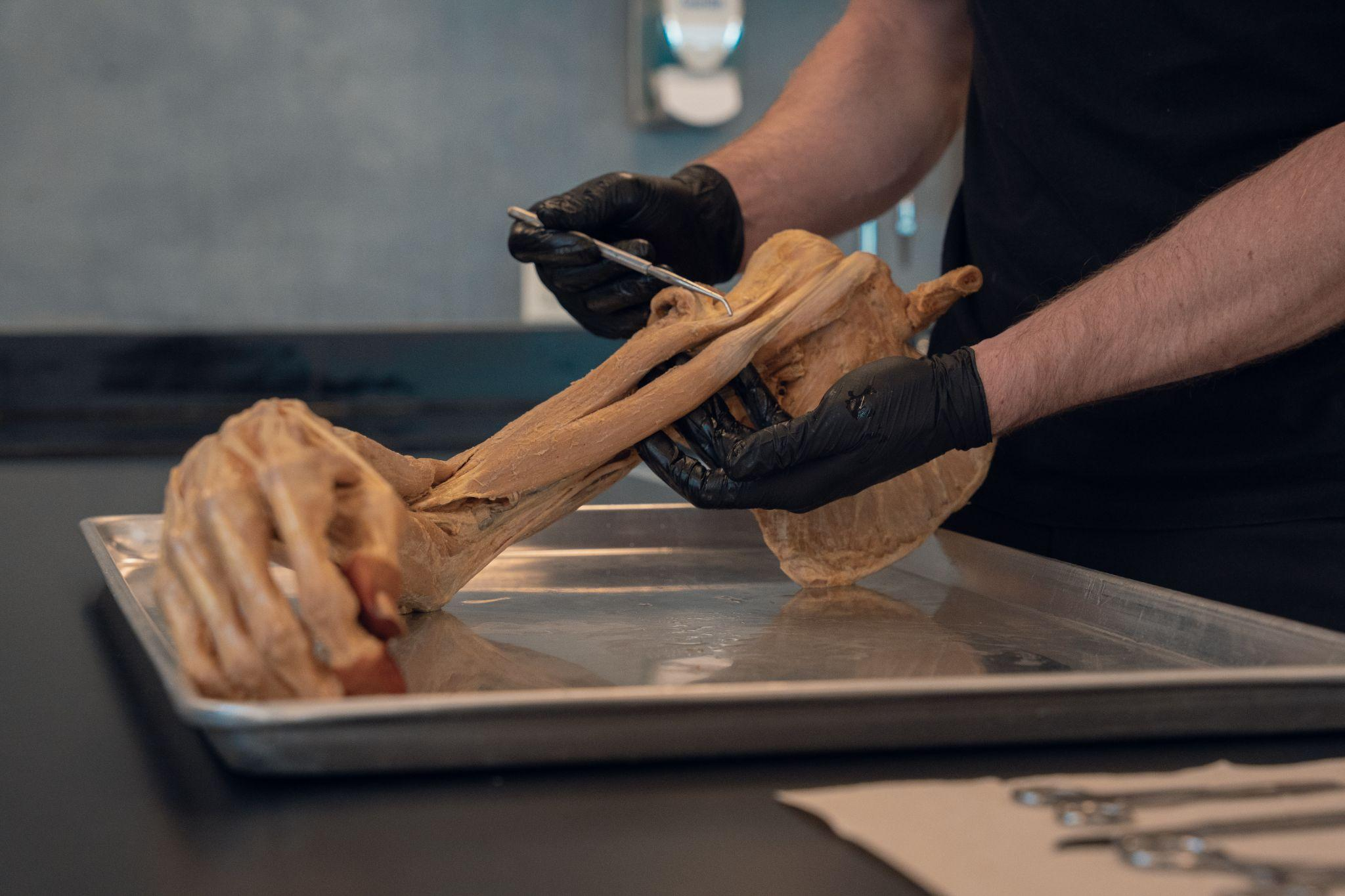
Why It Matters
Joints act as hinges, pivots, and shock absorbers within the body’s kinetic chain. They allow for smooth, controlled motion while distributing mechanical stress efficiently during physical activity. However, when joints fall out of proper alignment, whether from poor technique, muscular imbalances, or mobility restrictions, they can no longer absorb and transfer forces safely.
Key Concepts
- Types of Joints:
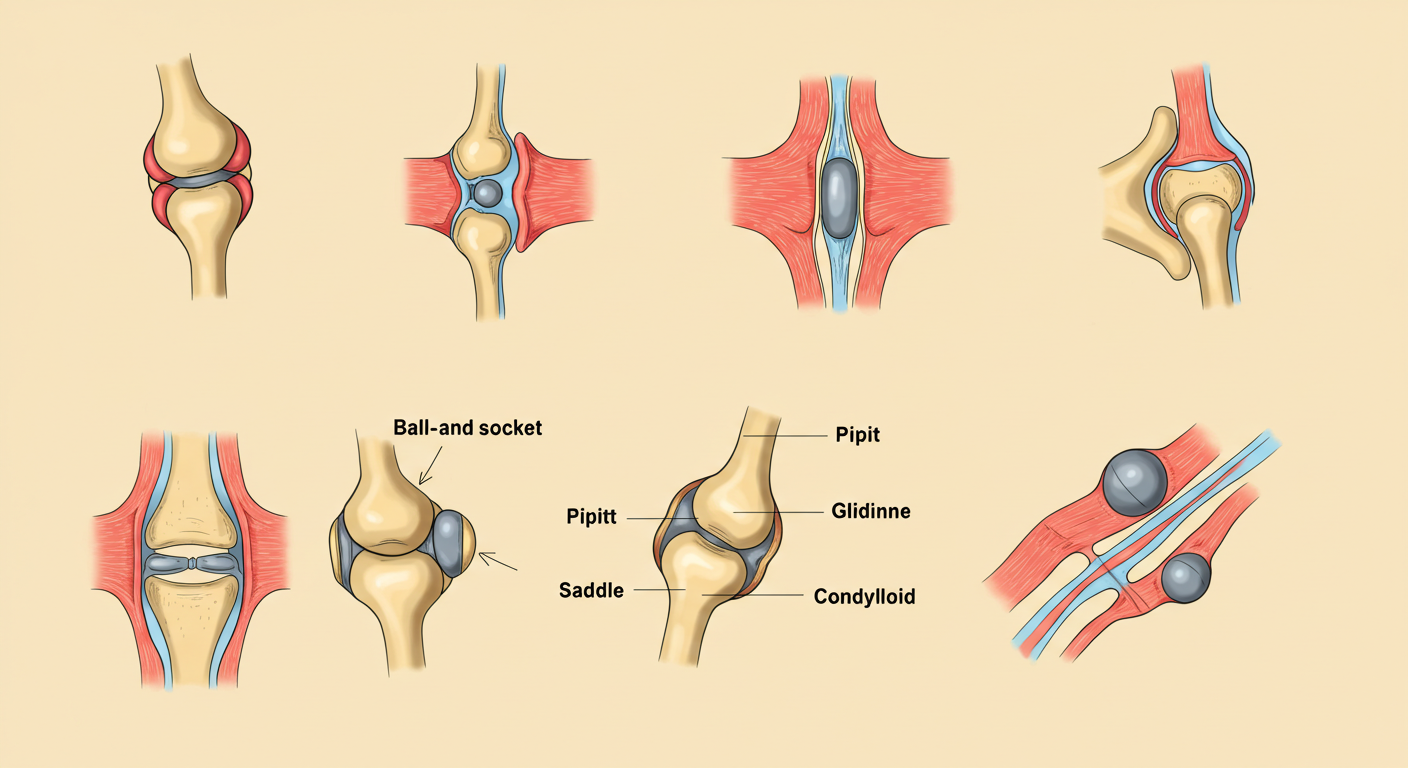
- Hinge Joints (e.g., elbows, knees): Designed for flexion/extension.
- Ball-and-Socket Joints (e.g., hips, shoulders): Allow multi-directional movement.
- Gliding Joints (e.g., wrists, ankles): Enable subtle shifts for stability.
- Common Mistakes & fixes:
- Knee Valgus (Collapsing Inward): Weak gluteus medius often causes this during squats. Fix with clam shells and banded lateral walks.
- Shoulder Impingement: Occurs when the rotator cuff rubs against the acromion during overhead lifts.
Practical Application
Deadlift Demo: Why Alignment Matters
Joints act as hinges and shock absorbers. In a deadlift, poor alignment (like rounding the lower back or letting knees track forward) shifts force to passive structures, increasing injury risk.
Key Technique:
- Hip Hinge: Knees slightly bent, spine neutral, hips drive back.
- Client Cue: “Push the floor away with your feet.” This activates glutes and hamstrings, protecting the spine and keeping joints stacked safely.
Why It Matters:
- Maintains kinetic chain integrity
- Prevents joint overload and lumbar strain
- Maximizes posterior chain activation
🔗 Master joint biomechanics in our Foundations of Human Anatomy Course.
2. Muscle Hypertrophy: Science-Backed Strategies for Growth
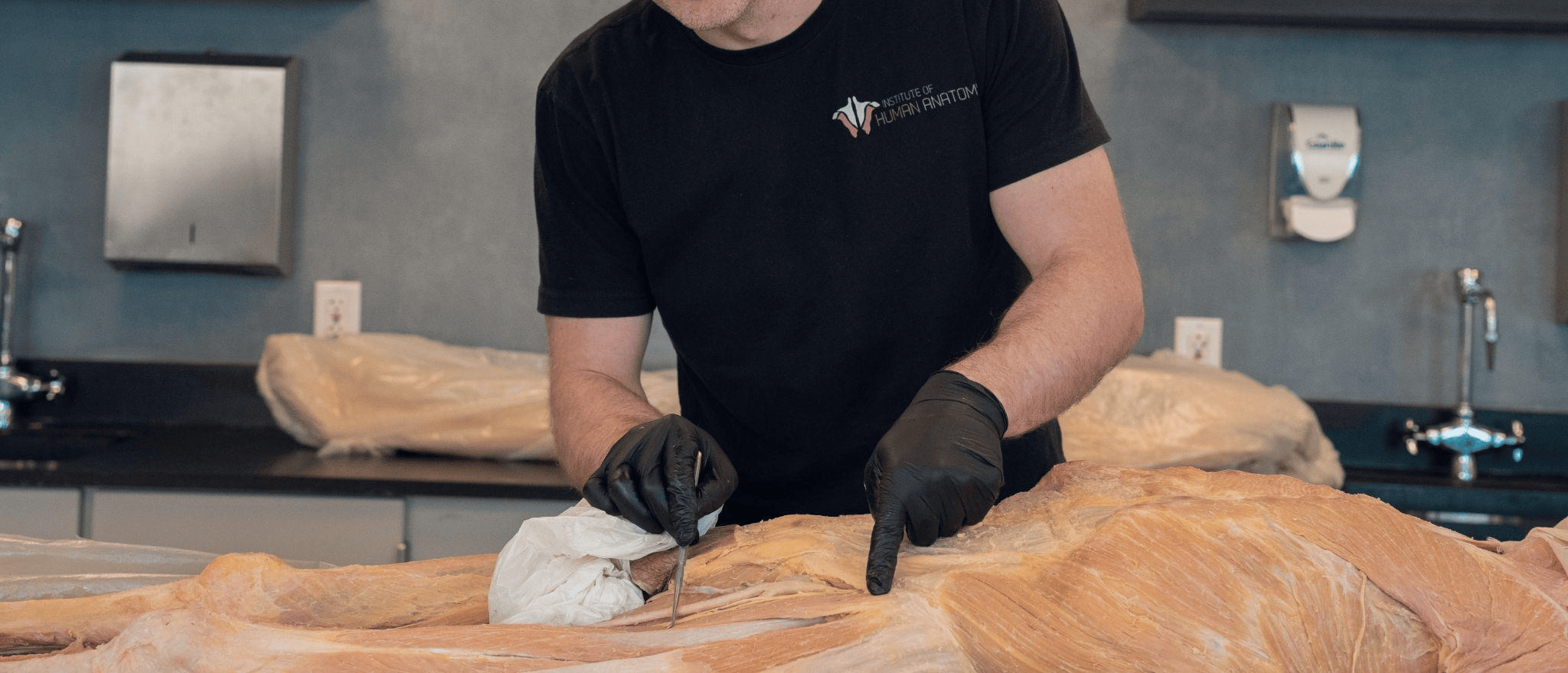
Key Considerations
Muscle growth isn’t simply about moving heavy weight; it’s about applying precise, progressive mechanical tension, optimizing motor unit recruitment, and targeting specific muscle fibers through varied loading patterns and ranges of motion. These are principles grounded in exercise science and essential for both performance gains and long-term joint health.
Key Concepts
Mechanisms of Hypertrophy:
- Mechanical Tension: Lifting heavy weights, typically 70 to 85% of your one-repetition maximum (1RM), recruits high-threshold motor units, which are responsible for generating powerful muscle contractions essential for growth.
- Metabolic Stress: Performing high-repetition sets (12–20 reps) causes a buildup of lactate and other metabolites, stimulating the release of growth hormone (GH). GH plays a critical role in muscle repair and hypertrophy by promoting protein synthesis and tissue regeneration. (For more on Growth Hormone and its role, see our Endocrine System Quiz Pack).
- Muscle Damage: Eccentric-focused exercises (slow lengthening of the muscle under tension, like slow negatives) create microscopic tears in muscle fibers. These microtears trigger an inflammatory response that leads to muscle remodeling and growth, improving strength and size over time.
Fiber-Specific Training:
- Type I (Slow-Twitch) Fibers: These fibers are more fatigue-resistant and excel in endurance activities such as cycling or high-repetition bodyweight circuits. Training these fibers improves muscular endurance and efficiency.
- Type II (Fast-Twitch) Fibers: These fibers generate explosive power and strength, responding best to high-intensity, short-duration exercises like sprints or Olympic lifts.
Practical Application
- Hybrid Workouts: Combine strength and hypertrophy phases.
- Example: 4 weeks of 5x5 strength training followed by 4 weeks of 3x12 hypertrophy-focused sets.
- Tempo Training:
- Use a 4-1-2-1 tempo (4s eccentric, 1s pause, 2s concentric, 1s rest) for time-under-tension.
🔗 Learn how exercise impacts other systems in our How the Heart Changes with Exercise Blog.
3. Posture Correction: Addressing Imbalances at the Root
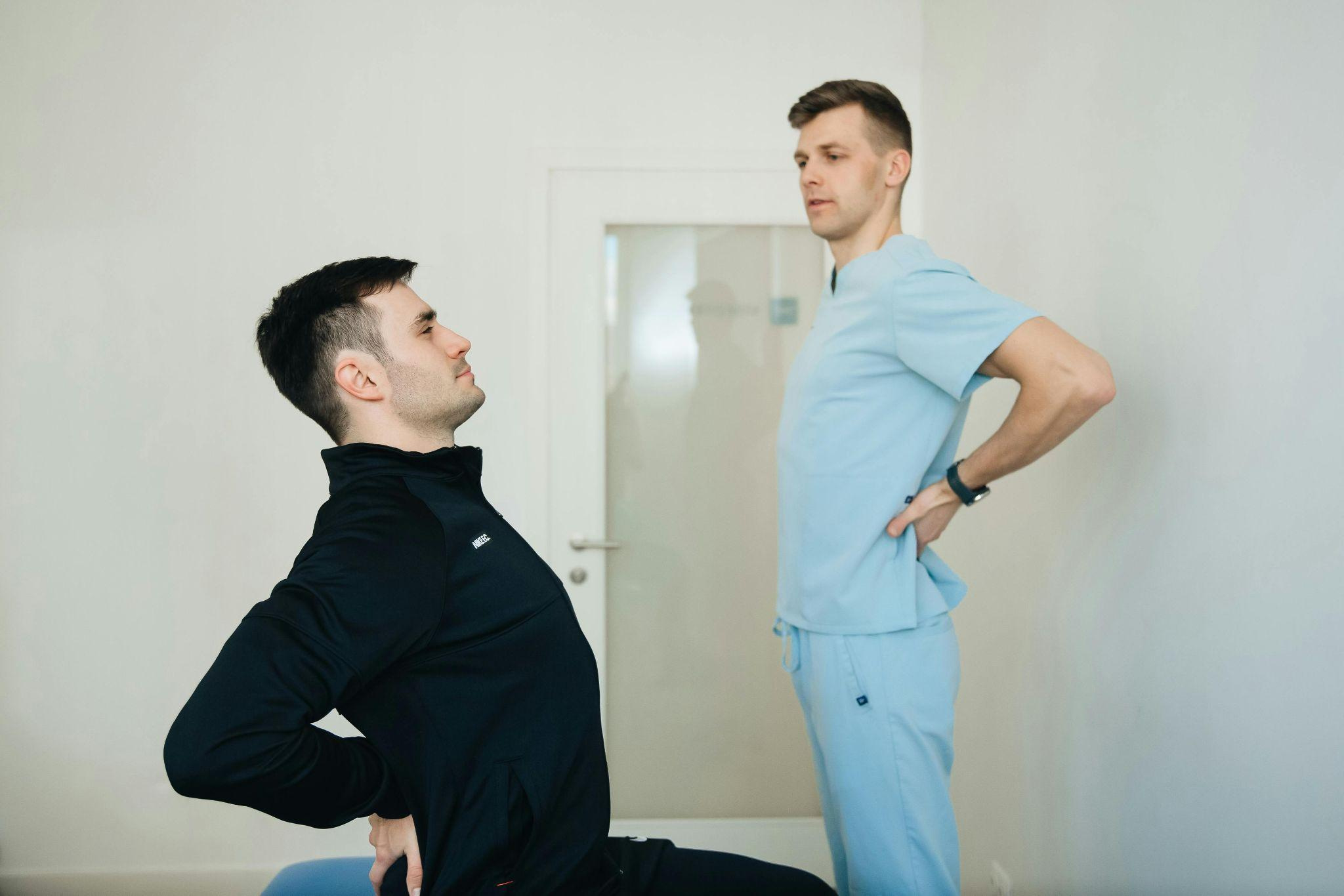
Why It Matters
Poor posture isn’t just about looking a certain way, it actually changes how your muscles work. When your posture is off, it alters the natural length-tension relationship of muscles, which means some muscles become too tight while others get weak. This imbalance forces your body to compensate, often leading to pain, injuries, or decreased performance.Key Concepts
Common Postural Dysfunctions:
Two postural patterns show up a lot:- Upper Crossed Syndrome: This happens when the chest muscles (pectorals) and upper traps get tight, while the lower traps and deep neck flexors become weak. The result? Rounded shoulders and a forward head posture.
- Lower Crossed Syndrome: Tight hip flexors and lower back muscles combine with weak glutes and abdominal muscles, often causing an exaggerated arch in the lower back and anterior pelvic tilt.
Assessment Tools:
To spot these issues, trainers can use simple but effective tests:- Wall Test: Have your client stand with their back against a wall. Ideally, their head, shoulders, and glutes should all naturally touch the wall. If not, there’s likely a postural imbalance.
- Overhead Squat Assessment: Watching a client’s squat can reveal problems like forward leaning, excessive arching of the lower back, or knees caving inward, all signs of poor posture and muscle imbalances.
Practical Application
Corrective Exercises:
Addressing these imbalances means a mix of stretching tight muscles and strengthening weak ones. For example:- Rounded Shoulders: Stretch the chest with doorway pec stretches held for about 30 seconds. Strengthen the upper back with band pull-aparts and prone Y-W-T raises to improve scapular stability.
- Anterior Pelvic Tilt: Stretch hip flexors with kneeling hip flexor stretches, and strengthen the core and glutes with exercises like dead bugs and glute bridges.
Breathing Drills:
Breathing properly can actually support your posture. Teaching diaphragmatic breathing, encouraging clients to “breathe into the ribs, not the belly,” helps engage the core muscles and improve spinal stability.🔗 Explore how hormones influence recovery in our Endocrine System Blog.
4. Nervous System Optimization: The Hidden Driver of Performance
Why It Matters
The nervous system plays a central role in controlling how muscles contract, coordinate, and manage fatigue. It sends signals that determine which muscles activate, how strongly they contract, and in what sequence, ensuring smooth and efficient movement. Without proper nervous system function, muscle recruitment becomes uncoordinated, leading to reduced performance and higher injury risk. Understanding this connection helps trainers design programs that improve both muscle strength and neural control for better results.
Key Concepts
- Motor Unit Recruitment:
- Low-intensity efforts use Type I fibers; maximal efforts activate Type II fibers.
- Rate Coding: The speed at which motor units fire impacts power output.
- Proprioception:
- The body’s ability to sense position in space. Poor proprioception increases injury risk.
Practical Application
- Neuromuscular Drills:
- Plyometrics: Box jumps or medicine ball throws improve rate of force development.
- Single-Leg Balances: Progress from static holds to dynamic movements (e.g., single-leg RDLs).
- Avoiding CNS Burnout:
- Schedule deload weeks every 4-6 weeks to reset the nervous system.
- Prioritize sleep, as glymphatic system activity during deep sleep clears neural waste.
5. Recovery Anatomy: How the Body Repairs (and Why It’s Non-Negotiable)
Why It Matters
- Recovery Isn’t Passive; It’s Where Real Gains Happen
Many think recovery is just “rest,” but in reality, it’s the powerhouse phase where your body rebuilds muscle fibers, repairs tissues, and grows stronger. Skipping or neglecting recovery slows progress and increases injury risk. Want to unlock your full potential? Understanding how recovery works is essential. -
Key Concepts You Need to Know
- Fascia Health: The Unsung Hero
Your fascia, the connective tissue wrapping muscles, is vital for smooth movement and flexibility. Foam rolling and myofascial release break up sticky adhesions, especially around quads, IT bands, and lats, freeing your muscles to perform better. Remember, fascia is about 70% water, so staying hydrated keeps it supple and elastic. - Sleep & Hormones: Your Body’s Repair Crew
During deep sleep, Growth Hormone (GH) surges, driving muscle repair and protein synthesis. But chronic stress spikes cortisol, a hormone that breaks down muscle and slows recovery. Prioritizing quality sleep and stress management isn’t optional; it’s a performance strategy. -
Practical Tips to Maximize Recovery
- Active Recovery Workouts
Don’t just rest, but move! Try 10-minute mobility circuits with hip Controlled Articular Rotations (CARs) and thoracic spine rotations to boost joint health. Low-intensity cardio like cycling or swimming for 20-30 minutes increases blood flow, delivering nutrients to healing tissues without overloading your joints. - Nutrition Hacks for Repair
After your workout, fuel up with 20-40g of protein paired with carbs within two hours to replenish glycogen stores and support muscle growth. Add anti-inflammatory foods like turmeric, fatty fish, and leafy greens to reduce soreness and speed recovery.
Case Study: Applying Anatomy to Real-World Training
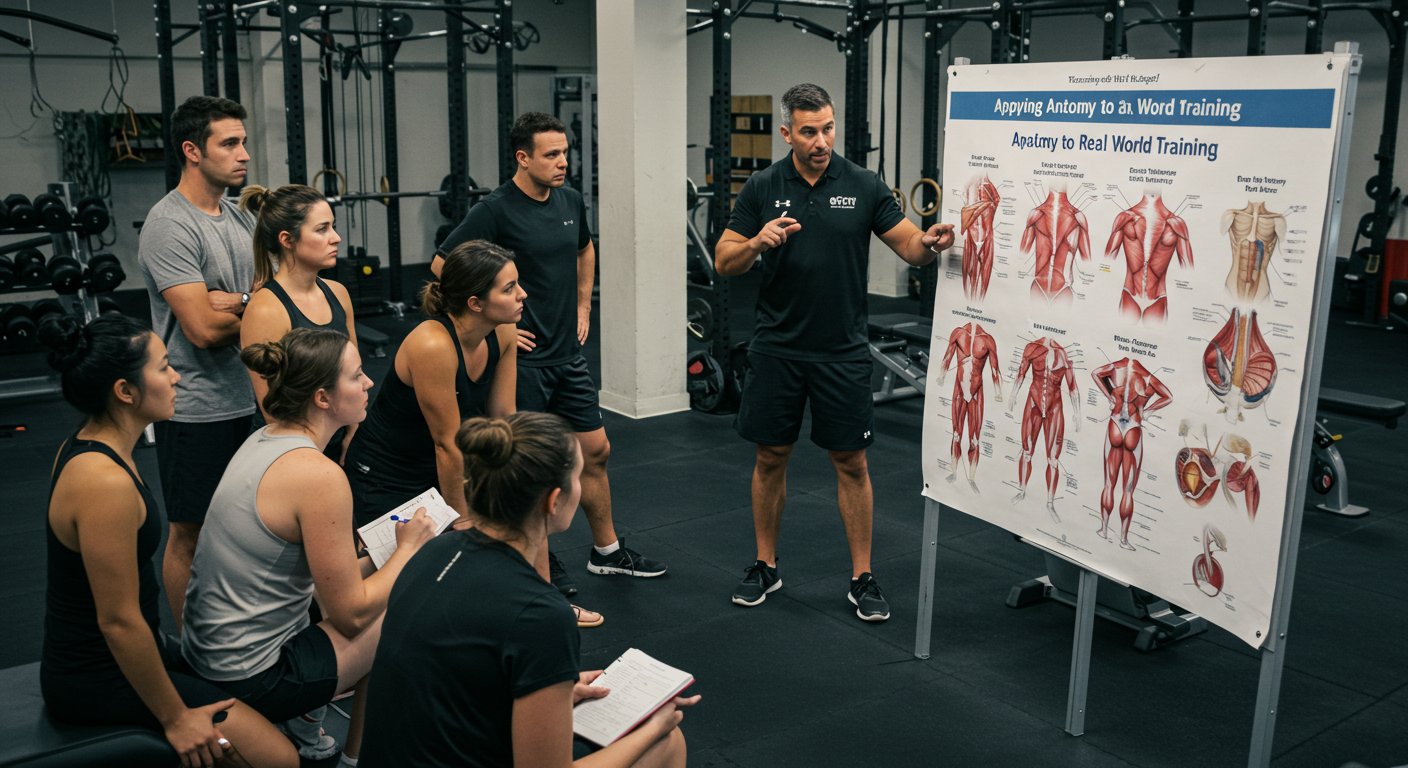
Client Profile: A 45-year-old with lower back pain and limited hip mobility.
Anatomy-Based Approach:
- Assessment: Identified tight hip flexors and weak glutes via Thomas Test and overhead squat.
- Programming:
- Phase 1: Foam rolling + hip flexor stretches.
- Phase 2: Glute activation drills (banded clamshells, hip thrusts).
- Phase 3: Loaded movements (kettlebell deadlifts, goblet squats).
- Result: Pain-free squats in 8 weeks and improved deadlift form.
Final Thoughts: Elevate Your Training with Anatomy
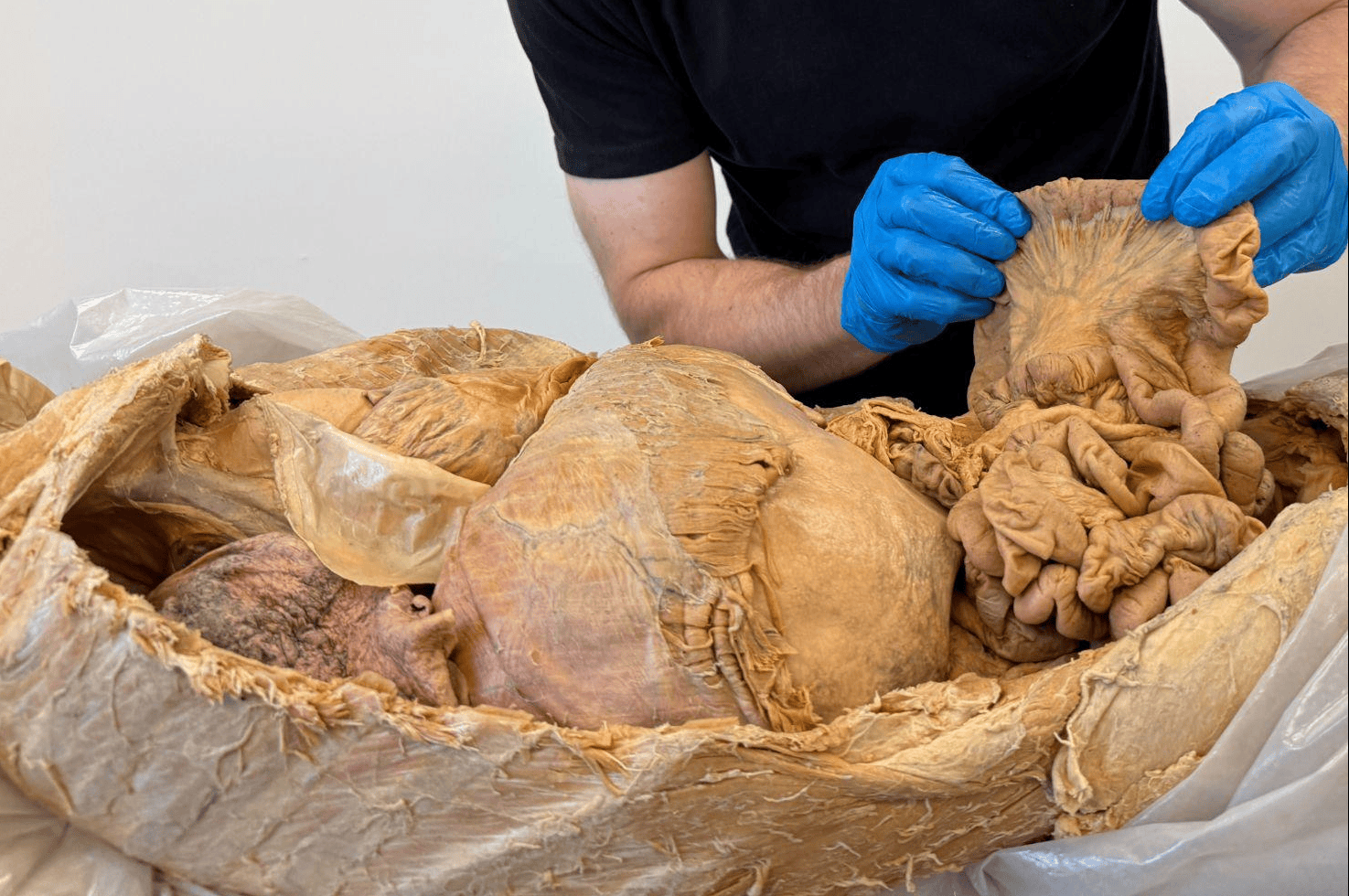
Understanding anatomy transforms you from a trainer to a movement specialist. By prioritizing joint alignment, hypertrophy science, posture, neurology, and recovery, you’ll:
- Reduce client injuries
- Accelerate progress
- Build long-term trust
🔗 For advanced strategies, the National Academy of Sports Medicine (NASM) offers certifications in corrective exercise.


